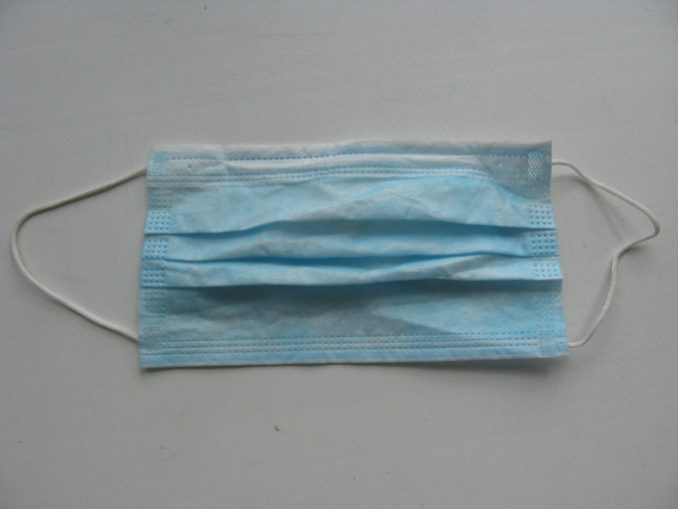
Masks, masks, everywhere and all the hubs did shrink. Everywhere I go there are masked goons, in cars alone, on pavements alone, wearing them in all sorts of places where they are not required by law. In the summer, after the so-called freedom day we finally got rid of the law mandating that masks had to be worn when entering a pub or when going for a jimmy in a pub.
However, a sizeable chunk of the population continued this pointless ritual. Much of my summer was spent depressingly watching them from within a coffee shop; singles, pairs, large groups wandering along the pavement with no mask then dithering outside the premises finding masks, fumbling about putting the things on, and then finally entering the premises to walk six paces to a table then take them off again. They would then sit down surrounded by people exhaling for an hour or more. One of them would peel off and get into the queue still masked to order the drinks, then return to the table and remove the mask.
Anyone who thinks that pulling a cloth face covering from a box with “does not protect against covid-19” printed on the side and then puts it on for 1% of their stay in a coffee shop or pub where they are surrounded with chatting, yawning, sighing, shouting, singing, exhaling people somehow reduces their risk or anyone else’s needs to see a shrink. Yet, continue with this nugatory ritual they did (and do).
As the weeks went by the masked numbers dropped. The normies steadily got less inclined to wear one, the last mask in the box got used and dirty and getting another box full was a chore too far. However, this was not the case for all. Even two months later there were still the die-hards ordering a pint in one. Some of these characters really believe in it, they are not just virtue signalling. I have talked to them and overheard them; some are those I have known for years – people I would have trusted to babysit my son when he was small, or to borrow my car for a few days, have now turned out to have utterly taken leave of their senses.
Hate facts as ever undo their beliefs, but there are none as blind as those who will not see. Masks started off as a false silver bullet to the political bourgeoisie with comments from all sorts of bureaucrats about them not being effective, but that soon changed in the summer of 2020. Many extremists think they are protecting themselves, but ultimately masks became a supposed means to protect others – the virtue signallers wankfest.
All sorts of rubbish floats around the various media about how much asks help reduce transmission. Picture graphs, quotes from suspect experts, memes. All of these are inflated by false claims, but more than that by the false logic of assuming that person A is infected and person B will catch it.
What I seek to do here is to examine this scenario logically and try to divine what difference mask wearing would really make.
Transmission is only possible where you have the virus. Even at the highest point of the testing campaign and case levels very few people had it, less than 2%. Of late the figure is 1%+ courtesy of Omicron, but usually less than 1% have it if our mass testing regime is to be believed. Assuming the UK population to be 70 million (and given the excess number of EU citizens who turned out to be living here, it could be higher), 1% would be 700,000. Outside of the recent Omicron peak, the peak number of daily cases was in late December 2020 at below 82,000, which means that even if most cases persist for ten days and no one with the bug was tested more than once, it is very rare for over 1% of the population to have the virus.
So, we really have 0.5% of the population with the virus on an average day during the past 12-18 months whilst the mask mongs have been busy, and most of these people know there is something wrong with them and would either lay low or test positive and isolate.
Our next question is how many would either go out with the Rona knowingly or blissfully unaware they have it? Well, this group has two sections. Let us start with the blissfully unaware, which means we must consider asymptomatic transmission.
According to the political bourgeoisie the Rona is much spread by asymptomatic sufferers. This assertion was criticised by Fauci at the outset of the shamdemic as can still be seen on Youtube, but was soon turned about face to fit the new narrative. In the UK (like elsewhere) the official line is that 30% of asymptomatic sufferers spread the Rona. This has been much castigated in the Conservative Woman due to the wet finger in the air methodology ( Covid: The woeful case for asymptomatic transmission ) and the correct level is probably 20%, far below the 30% touted by fear porn ( SARS-CoV-2 transmission without symptoms ).
We must next turn our attention to what percentage of the population have the Rona and know it and go out into social areas nonetheless. Let us be generous and go for 10%, which combined with the likely asymptomatic spreader group gives us a total of 30%.
Operating on the basis that on a normal mundane day during the past 12-18 month 0.5% of the population were infected, we are then left with 0.15% who may go out and about potentially spreading it on average.
Then let us turn to the prospect of catching ‘It’. There are different expert opinions on this, but it seems that several minutes of exposure is needed as a base line. So, if our 0.15% of the population do go out and about, what is the chance of them actually infecting anyone? As a percentage of interactions, it has to be a small amount that actually involve prolonged exposure to the degree of getting infected.
Many situations must be considered at this juncture. How many close-up situations occur for a prolonged time in a supermarket or petrol station? How many in a clothes shop or shoe shop? How much of a risk is there whilst in a huge warehouse like Homebase or Wickes? In a small shop which restricts the number on the premises at any given time, what are the chances of passing the virus on?
Most public areas publicise, and most of the public are aware of, the concept of social distancing. Thus with all these mitigating aspects the chance of exposing another person sufficiently to the virus whilst out buying things is limited. It is hard to put a figure on this, but it will be far below 100%. Let us be generous once more and plump for a 25% chance. This would then give our 0.15% of the population a 0.0375% chance of getting close enough on a prolonged basis to infect someone.
Now that we have established this figure we must consider what are the chances of that person receiving the covid-infested fumes from our infected person actually contracting the illness. For this we must consider the sheer weight of people who have had the virus already and are immune to it.
UCL reckoned that the magic herd immunity level was achieved last April. Let us assume that 60% of the population are immune, and that the remaining 40% have a chance of being infected per day by someone with the virus. Our 0.0375% is thus now reduced to 0.015%. This is the real daily chance of someone with the virus achieving transmission in the wider community (hospitals and care homes are a separate matter, causing most of the cases which have led to deaths so far).
Having established the assumed average daily transmission potential rate at 0.015% in the wider community let us reflect upon what that would actually mean should transmission actually occur.
The vast majority of the population experience mild or non-recognisable symptoms, possibly as high as 80% of cases. Let us be generous again and assume that 20% of cases are serious. This would mean that the daily quota in the wider community of catching a serious dose of The Rona across the population is 0.003%.
Thus, we now arrive at a position where the daily odds of someone with the virus going out in the wider community and infecting someone else is in ‘win the lottery’ territory. And this is whilst being generous to many of the links in the transmission chain. However, our calculations are still not complete. We have yet to consider what the mask would do to this miniscule risk.
Masks would have different impacts on different situations. Outdoors they are going to be extremely ineffective indeed as the virus is known to not spread outdoors much if at all. Some scenarios would also render them extremely ineffective such as in enclosed areas where the wearer is static and thus over a minute or two produces a mushroom cloud of fumes that will drift down and about; masks do not reduce the amount a person exhales, they divert much of the exhale upwards and sidewards as can be seen on any video of someone wearing them in a very cold environment.
Many of the proponents of masks operate on the basis that they do not reduce the risk of transmission by much, but claim they should be utilised because even a tiny reduction is worth it (‘if it saves one life’, and all that). Again I propose that we are generous to the mask mandate lovers and assume that this tiny level of risk that our calculations have identified is reduce by a significant amount due to masks – by 25%.
This will the yield out final calculation, the difference between the reasonably estimated actual level of risk, and the amount it is reduced by when masks are deployed.
0.003% would be the original risk, and this would be reduced by a quarter: 0.00075%. This final figure would be the amount of risk shaved off of the background risk by mask mandates on an average day during the past 12-18 months of pandemic. And note that throughout we have been generous in our assumptions; just being a little less generous in one or two of the transmission links would yield an even lower final figure.
Little wonder then that those societies who have the most tyrannical mask mandates have fared so poorly, often worse than those who did not. The idea of operating on the basis that you are carrying and spreading a virus all day every day throughout a two-year pandemic is ludicrous, especially for those who have already had the virus and egregiously so for those who insist on putting a pointless bit of cloth over their face for 30 seconds as they enter a coffee shop when the law does not even require it.
Beyond that let us also dwell on the environmental impact of billions of these fabric items going to landfill, or worse still onto the ground in parks, public footpaths, areas of outstanding natural beauty, ditches, streams, ponds, lakes, canals, rivers, and of course the oceans, polluting as they go. And let us also consider that there is a huge overlap between the extremists who champion mask wearing and the environmental zealots in our society and media.
Mask mongs. Far worse titles could be applied to them.
© Truthsayer 2022



